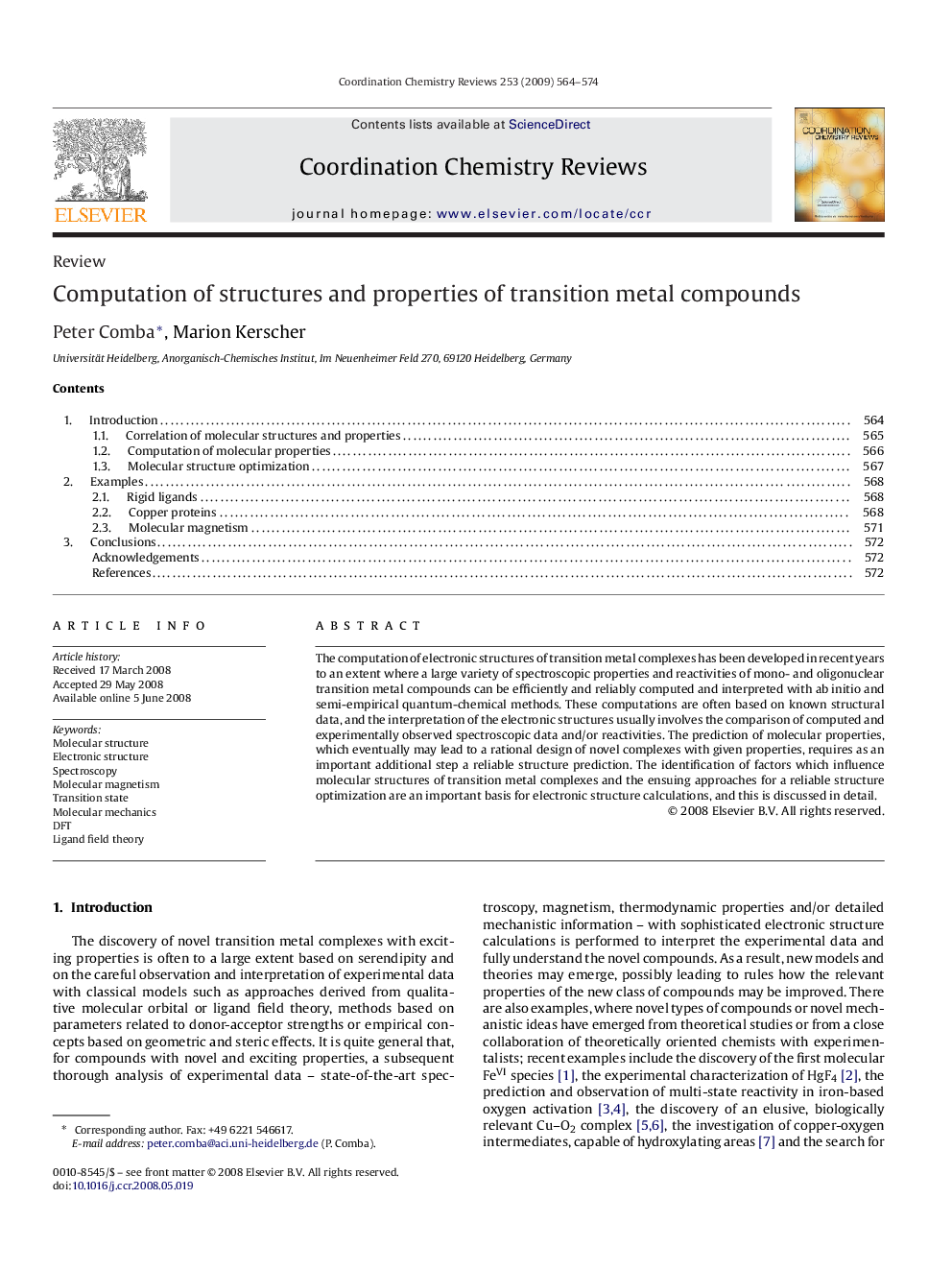| Article ID | Journal | Published Year | Pages | File Type |
|---|---|---|---|---|
| 1299868 | Coordination Chemistry Reviews | 2009 | 11 Pages |
The computation of electronic structures of transition metal complexes has been developed in recent years to an extent where a large variety of spectroscopic properties and reactivities of mono- and oligonuclear transition metal compounds can be efficiently and reliably computed and interpreted with ab initio and semi-empirical quantum-chemical methods. These computations are often based on known structural data, and the interpretation of the electronic structures usually involves the comparison of computed and experimentally observed spectroscopic data and/or reactivities. The prediction of molecular properties, which eventually may lead to a rational design of novel complexes with given properties, requires as an important additional step a reliable structure prediction. The identification of factors which influence molecular structures of transition metal complexes and the ensuing approaches for a reliable structure optimization are an important basis for electronic structure calculations, and this is discussed in detail.
